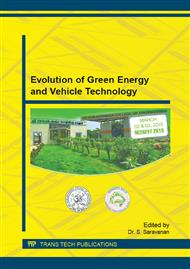p.79
p.87
p.93
p.102
p.107
p.112
p.118
p.124
p.130
Heat Transfer Analysis of Extruded Rectangular Fin over Conventional Rectangular Fins by Numerical Simulation
Abstract:
Improving the performance of the computers and maintaining the operating temperature is an important task for the computer hardware manufacturers. The junction temperature of the electronic components is a critical problem which needs to be addressed in a competent way. Due to the improvement in the technology, the size and weight of the electronic components reduced to a greater extent and which in turn increases the operating power and speed. This increases the heat generated by the electronic component. Electronic components normally use conventional rectangular fin as heat sink for the step up in heat transfer. The need is to make a heat sink design that should overcome the problem related to transfer of heat by the electronic components. The heat transfer depends on parameters like heat sink’s surface area, pitch, design and material used. Optimization of the fin design by number of experiments is more expensive and laborious as well. CFD (Computational Fluid Dynamics) simulation validated with experimentation can be a good alternative for performing series of experiments. CFD modeling and simulation for the best fin design has been carried out for the current study. An alternative design for conventional rectangular fin has been proposed for this study called as Extruded Rectangular Fin (ERF). The proposed ERF shows good heat transfer when compared to conventional and interrupted rectangular fin with holes. Optimum cooling achieved for the system with the fin aspect ratio of 3.5.
Info:
Periodical:
Pages:
130-135
Citation:
Online since:
November 2015
Authors:
Price:
Сopyright:
© 2015 Trans Tech Publications Ltd. All Rights Reserved
Share:
Citation:


